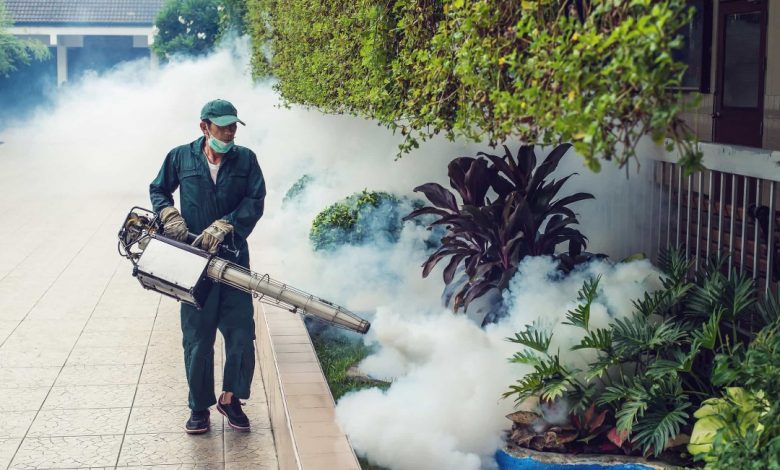Connexion: Dengue way of telling if your city is clean


An old-timer of the Lions Club, Kok Choy Lam, reminisced over the days long gone past when Ipoh was the cleanest city in Malaysia. But this image has fallen into the drain, covered over by illegal dumpsites sprouting up like weeds. She fears that these dumps are having an adverse impact on public health, as water trapped in them provides breeding grounds for Aedes mosquitoes.
There is hardly any city in Malaysia that hasn’t slipped into the drain. Shouldn’t there also be a “dirtiest city in Malaysia” award? We shall have more to say on this later.
A month ago, Mayor Dato Rumaizi Baharin revealed that the city council cleaned 1,672 locations of illegal garbage piles 3,765 times from Jan 1 to July 30 this year. This would mean that the culprits repeated their offences at least once at the same spot. In January last year, the mayor announced plans for Ipoh to regain its “cleanest city in Malaysia” title and then strive to overtake Singapore as the cleanest city in Southeast Asia.
How will you decide whether a city should receive the “cleanest city” award or the “dirtiest city” award? Until such time as the use of the Wolbachia-carrying mosquitoes that destroy Aedes becomes widespread, a relevant yardstick of measurement for cleanliness is the number of dengue cases per capita in a city.
Let’s take a hypothetical example: Ipoh with a population of 800,000 registers 270 cases of dengue fever in one epidemiological week, and Kuala Lumpur with a population of 1,400,000 registers 500 cases the same week. The number of cases per capita in Ipoh is 0.033 while the number of cases per capita in KL is 0.035. There is really no difference.
Why is dengue a relevant yardstick? If you hold the title of cleanest city in Southeast Asia but one in 1,000 persons has been hospitalised for dengue, your title is worthless as it does not reflect the state of public health. Dengue is a very painful affliction, and if you have suffered once from it you don’t want to go through it again. In the year 2020, Malaysia recorded 145 deaths from dengue.
Dengue is a sign as well as a consequence of environmental abuse. In that year, 2020, Perak State Health Committee chairman A. Sivanesan declared that indiscriminate throwing of garbage that remain uncollected was one of the main factors causing dengue cases in the State to shoot above 3,200 compared to 2,736 cases in 2018.
Places where Aedes mosquitoes thrive fall into two categories: buildings and open spaces. In terms of ownership, these can be subcategorised into public and private. Let’s examine public open spaces in this article, because they contribute half the breeding spots. In another article, we can talk about mosquito breeding in private premises.
All over Malaysia there is rubbish scattered in drains, on road shoulders, roadsides, walkways, back lanes, playgrounds, undergrowth, lallang patches, uncovered manholes, and at the foot of signboards. Aedes mosquitoes love plastic cups, bags, wrappers and bottles, soiled diapers, food containers, drink packets, used face masks, empty cigarette packs, old mattresses, and broken furniture as they trap water ideal for breeding.
City councils engage contractors to do cleaning, but sweepers habitually underperform or do a careless job such as leaving tall grass uncut and stuffing tree leaves into drains for convenience. Soggy playground mats have also been spotted with mosquito larvae. Lack of supervision over the cleaners is obvious.
Besides residents, shopkeepers are also the litterbugs with frequent reports of wastewater, fats, oils, and grease poured into drains especially by eateries.
The Malaysian Press Institute should organise a yearly “cleanest city and dirtiest city in Malaysia” award presentation, as journalists are the country’s sharpest eyes and ears next to eco-activists. While indiscriminate rubbish dumping is also widely acknowledged to cause flooding, few people know that it contributes to the generally poor health condition of Malaysians.
Numerous international studies confirm that open garbage heaps increase the risk of diseases and neurological conditions, as the impact of environmental abuse is on both the body and mind. Dumpsites attract rats, flies, and cockroaches. Mosquito larvae have also been found to ingest microplastics, and when the larvae are eaten by larger animals, the microplastics pass up the food chain and eventually enter the human body.
To become the cleanest city, you need a people-oriented city council that rests on a support base of neighbourhood committees. China has 110,000 neighbourhood committees that are responsible for conducting hygiene patrols. These neighbourhood committees function as grassroots direct governing units and are the foundational or basic tier of governance.
A clean city is possible only if neighbourhood residents have a strong sense of community that creates a better living environment. In such a neighbourhood, residents care for more than their own homes. They also look after the environment.
To build a sense of community, state law must compel the establishment of neighbourhood committees and stipulate that every household must have a representative serving as a member for one term at least once every 20 years. If parents can’t find time to serve, then the task goes to their children when they reach age 18.
Will there be volunteers to serve in the committee? Assuredly yes. There are many reports that as soon as a capable leader raises the flag, residents turn up to help clear their neighbourhood of mosquito breeding grounds. Four months ago, 100 volunteers went to Kampung Simee and collected 20 bags of garbage.
Unfortunately these voluntary efforts are not sustainable because there is no structure of neighbourhood committees legally authorised to exercise the powers of grassroots basic governance on a 24/7 basis.
Neighbourhood hygiene patrols can be very effective, especially if the city council allows ratepayers to exercise some control over the expenditure. Once they are made responsible for expenditure of their own property assessment tax money, ratepayers will likely enforce hygiene rules strictly because it costs twice as much to clean up a slum than to keep a relatively well-kept neighbourhood clean.
The city council must also enact tougher regulations against littering reported by the committees or captured on street CCTV. Penalties should not just be heavier fines but must include a minimum of 3 hours to a maximum of 30 days of heavy-duty community cleaning service. After serving 30 days clearing drains of trash, no litterbug will ever throw anything in public again.
========================================
Disclaimer: The views and opinions expressed in this article are those of the author and do not necessarily reflect the official policy or position of Ipoh Echo


